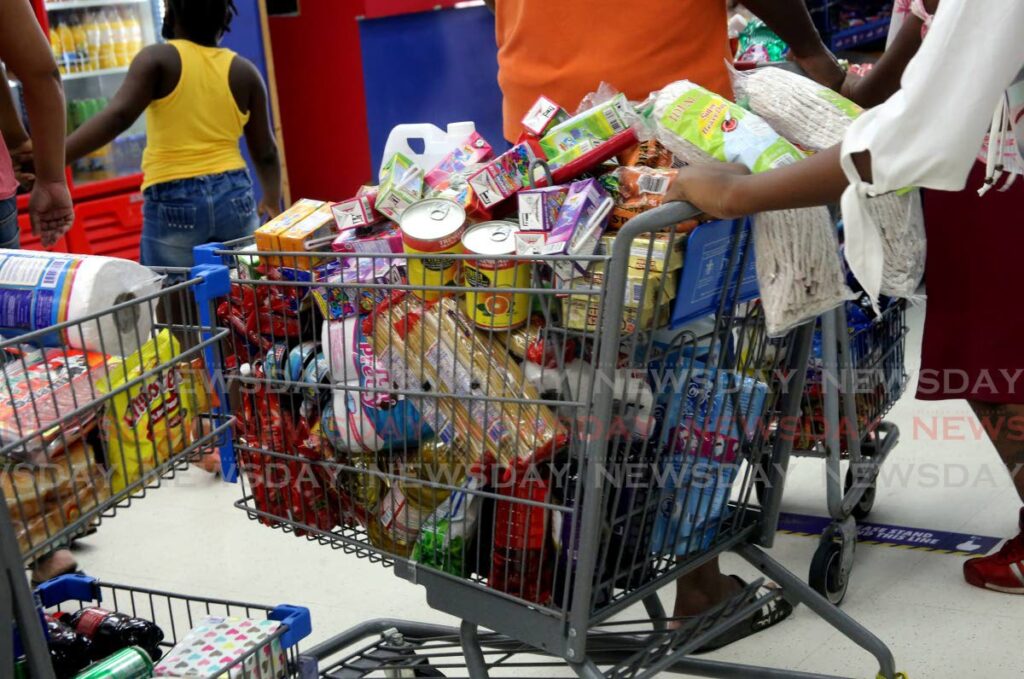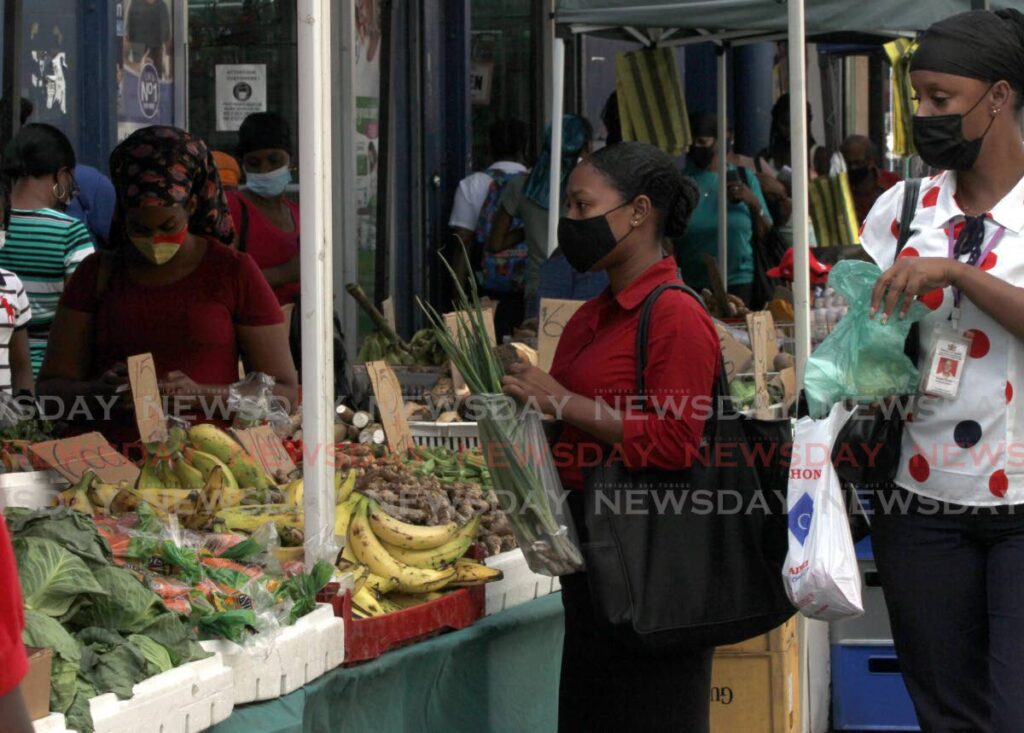Why are high food prices slow to come down? It's the middlemen

High food-prices has become one of the largest burdens on the cost of living for consumers in TT, with even the Trade and Industry Minister, Paula Gopee-Scoon, expressing grave concerns about how much people pay for basic items, such as flour and vegetables.
Despite TT’s costly food-import bill there is still a list of products that are grown locally and supplied to supermarkets which should be easier on customers’ pockets. But with vegetables such as melongene costing as much as $15 a pound people are asking why are locally-produced foods so expensive, and when will the cost of these items normalise?
Agricultural Society of TT president Daryl Rampersad told Business Day that as crops move from the farm to supermarkets, customers stand to pay almost double the initial cost of production. He claims the profit that comes from high prices do not end up in the hands of the farmer or the supermarket owner, but the middlemen who buy from farmers, and sell to supermarkets at high mark-ups.
“The reason why we would make that statement is if I’m selling baigan or tomatoes at $3 a pound, that’s close to five per cent in mark-ups. When we do that the middleman, who is now selling for $5 a pound (that) he making now, looking at the markup, (it's) close to 75 per cent markup without making any initial investment or long-term investment. That’s a short-term investment, but with a 75 per cent increase. The agricultural sector had a 300 per cent increase (in costs) last year, so the percentage (profit) we’re working with right now is less than ten. However, it is based on the production that we have available right now. If we can increase our production, we will be able sell between 25 to 30 per cent on our investment.”
Drawing from his experience as an agronomist, Rampersad said groceries buy fresh produce at an already high price, but they add a 25 per cent markup, leaving customers to pay almost double the price.
Supermarket Association of TT (SATT) president Rajiv Diptee added, “In most cases farmers sell to middlemen who markup the goods at the stalls and then sell to stores. Some stores might have direct relations with farmers but the issues that exist with that is the quality assurance of produce including the consistency and reliability of supply which makes contract-farming difficult. Farmers are a very vulnerable class of people, so their prices reflect what they feel is the best price given the inputs such as fertilisers, feed and chemicals (which) have all seen price increases.”
Diptee said supermarkets get produce from the farmers' markets at Macoya and Debe at the prices given by the vendors. He said the standards and prices imposed on the produce are given by the National Marketing Development Corporation (Namdevco).

“Namdevco works with farmers to ensure GAP (good agricultural practices) certification is in place or working towards it,” said Diptee.
He added the prices paid for produce by SATT members vary.
Rampersad suggested to cut high prices there should be a programme that runs straight from farm-to-table as farmers would be able to gain a profit while produce would still be affordable to customers.
Locally, the prices of food and non-alcoholic beverages increased from 144.5 price points in October to 145.9 in November, according to the Central Statistical Office’s (CSO) retail-price index. The price-point increase resulted in a one per cent increase in the prices of goods.
The CSO said the full impact of the price increases were offset by decreases in prices of produce such as tomatoes, ochroes, oranges and Irish potatoes among other food items. The All-Items Index showed a 0.2 increase in prices across the board.
The Food and Agriculture Organisation of the UN (FAO) averaged the food-price index price points to have dropped 2.6 points or 1.9 per cent and is averaging 132.4 points from last November to December. November makes it the ninth consecutive monthly decline, standing at 1.3 points or one per cent below its value from 2022.
The FAO said the decline in December was driven by a steep drop in the international prices of vegetable oils along with cereal and meat prices, however, there is a counterbalance as the prices of sugar and dairy have seen moderate increases. The organisation recorded that for 2022 the food-price index averaged 143.7 which is 18 more points or 14.3 per cent than in 2021.
The vegetable oil price index showed that the average points is 144.4 in December, down 1.9 per cent from November. Despite this drop, it is higher than its decrease last February.
The FAO also averages its cereal price index to be 147.3 points in December which is 2.9 less than in 2021. It said wheat export prices also fell that month as ongoing harvests boosted supplies and competition among exporters.
American Chamber of Commerce TT (Amcham) president Toni Sirju-Ramnarine said escalating food prices are due to inflation and climate change impacts.
“With inflation expected to increase in 2023, according to the latest World Economic Outlook of the IMF, this will further dampen the purchasing power of consumers who are already facing increased pressure. Here we can incentivise opportunities for farming and agriculture,” she said on Wednesday at Amcham's Economic Outlook Forum at Hilton Trinidad, St Ann’s,
“We need to invest in smart agriculture, unlocking innovation within agriculture, implementing crop insurance for farmers, and enhancing our agro-processing industry, so we can reduce the import bill, improve the country’s food security, propel economic diversification, and create employment.”
Sirju-Ramnarine added that embarking on these initiatives can also improve TT’s food security, propel economic diversification and create employment.
“We can also recalibrate our efforts into developing the green hydrogen agenda and decarbonising the energy sector which would have significant contributions to GDP and act as a catalyst for lower carbon emissions, thereby creating a more sustainable and resilient economy. I know the government has already begun the work on this so all we need now are the right regulations, policies, and incentives to support the development of this green hydrogen economy.”

Comments
"Why are high food prices slow to come down? It’s the middlemen"